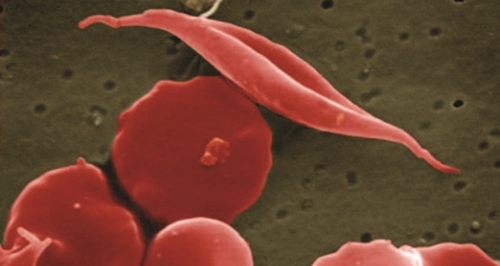21 November 2016. Drug maker Novartis is acquiring Selexys Pharmaceuticals Corp., a developer of treatments for pain episodes associated with sickle cell disease. The agreement to acquire Selexys is expected to bring the Oklahoma City company’s shareholders as much as $665 million.
Selexys Pharmaceuticals’ lead product, code-named SelG1, is designed as an antibody to address a key protein believed responsible for damage to blood vessels from sickle cell disease and the pain that results. Sickle cell disease is a genetic blood disorder affecting hemoglobin that delivers oxygen to cells in the body. People with sickle cell disease have hemoglobin molecules that cause blood cells to form into an atypical crescent or sickle shape.
That abnormal shape causes the blood cells to break down, lose flexibility, and accumulate in tiny capillaries, leading to anemia and periodic painful episodes. The disease is prevalent worldwide, and affects 70,000 to 80,000 people in the U.S., including about 1 in 500 people of African descent.
Selexys Pharma developed SelG1 as a synthetic antibody that seeks out and blocks the actions of P-selectins, proteins that accumulate on the surface of endothelial cells lining the inside of blood vessels and in blood platelets. P-selectins are also believed to promote accumulations of white blood cells called leukocytes on blood vessel walls, leading to inflammation and leakage causing the severe pain experienced by people with sickle cell disease.
Selexys tested SelG1 in an intermediate-stage clinical trial among 198 individuals with sickle cell disease, randomized to receive high or low doses of SelG1, or a placebo. The first 2 treatments were given by intravenous infusion 14 days apart, then every 4 weeks for 50 weeks. The study team looked primarily at the rate of pain crises related to sickle cell disease over a period of 1 year, but also related indicators, such as time to first and second pain crisis, and reports of adverse events.
Researchers from the study team conducting the trial will report their findings on 4 December at the annual meeting of American Society of Hematology in San Diego. Results show trial participants receiving the higher dose of SelG1 had a 47 percent lower rate of pain crises from sickle cell disease than placebo recipients, a large enough difference to be statistically reliable. Dosage size appears to play a role, however, as individuals receiving the lower dose experienced a 33 percent lower rate of pain crisis, a difference not quite large enough for statistical reliability.
Some secondary indicators of effectiveness including median time to first or second pain crisis and annual rate of uncomplicated pain crisis were also reliably lower for higher dose participants. The most frequent adverse events reported by at least 5 percent of SelG1 recipients included joint pain, itching, vomiting, chest pain, diarrhea, fatigue, and a road traffic accident, among others. During the study, 5 deaths occurred, 3 people taking SelG1 and 2 receiving the placebo, but none of the deaths were deemed a result of the treatments.
The agreement is expected to return as much as $665 million to Selexys shareholders, from initial, acquisition, and milestone payments. In 2012, Novartis obtained an exclusive option to acquire Selexys, and the deal represents Novartis’s exercise of that option. Novartis says the clinical trial results were instrumental in the decision to acquire Selexys.
Read more:
- Lower-Risk Blood Thinning Drugs Designed
- Gene Editing Negates Sickle Cell to Create Healthy Blood
- Chip Device Simulates Blood Vessels in Clotting
- Engineered Protein Advances to Treat Genetic Blood Disorders
- Stem Cell Biotech Licensing Blood Vessel Repair Technology
* * *


 RSS - Posts
RSS - Posts
You must be logged in to post a comment.